Andrew Paul Wood – 18 November, 2015
The Ocean is a conveniently vast thing, forgiving to loose curatorial process. As the accompanying catalogue states, “It's a space of projection; historically, a space of fiction.” And while it isn't explicitly stated, the exhibition must also be read within an intersectional feminist context. This is not just because of the superficial observation that all the artists are female, but also because of references to two seminal texts of feminist science fiction as the conceptual documents for the exhibition.
Christchurch
Future Artists-in-Residence at Te Whare Hera
The blue-grey wall
Curated by Barbara Siriex
21 October - 28 November 2015
Barbara Sirieix is a Paris-based freelance curator who recently held a month-long residency at The Physics Room in Christchurch supported by the New Zealand - France Friendship Fund. In the face of recent events in Paris this perhaps takes on a different resonance than when I originally wrote this review. Her interests lie in the exhibition as a processual format and its relationship to the fictional and poetic. The residency resulted in the exhibition the blue-grey wall featuring artists Madison Bycroft, Pauline Curnier Jardin, Eglė Kulbokaitė and Dorota Gawęda, Chloé Maillet and Louise Hervé (who are artists in residence at Te Whare Hera, Wellington in 2016), and Zoë Paul.
The core theme of the exhibition is the ocean as an uncharted place of possibility; an entity that connects places. From the perspective of New Zealand art this may seem somewhat trite, given our unavoidable relationship with the Pacific; after all, we made a cliché of it. To quote Allen Curnow’s 1941 poem The Unhistoric Story:
And whatever islands may be
Under or over the sea,
It is something different, something
Nobody counted on.
In that sense there is a feeling of bringing coals to Newcastle. The Ocean is also a conveniently vast thing, forgiving to loose curatorial process. As the accompanying catalogue states, “It’s a space of projection; historically, a space of fiction.” And while it isn’t explicitly stated, the exhibition must also be read within an intersectional feminist context. This is not just because of the superficial observation that all the artists are female, but also because of references to two seminal texts of feminist science fiction as the conceptual documents for the exhibition: Joan Slonczewski’s A Door into Ocean (1986) where a utopian-communal aquatic community of parthenogenic female humanoids battle patriarchal colonists with pacifist (and heavily didactic) strategies, and Ursula K. Le Guin’s short story Old Music and the Slave Woman (1999) which has a not dissimilar plot. In both cases the ocean is a strongly maternal, amniotic symbol as a place of strength for female protest.
Reference is also made to Epeli Hau’ofa’s influential 1994 essay Our Sea of Islands in which he outlines a vision of Pacific peoples as interconnected by the sea and voyaging - rather than by the colonising imperialistic hegemony of the land. A cynic might suggest this would come across less ironically as lip-service were a Polynesian-descended artist included in the exhibition. The Continental European experience of the Pacific is considerably different to the experience of living in it. You can’t just say it’s a generic island culture given the obvious imperialistic history of the British and Japanese. For the French Tahiti and New Caledonia are parts of France, governed from Paris. In New Zealand, even for Pākehā, the idea of “Pacificness” is less a theoretical construct than a real physical and often genealogical relationship which may colour the way a local audience reads such allusions.
The first installation that strikes on entering is (Polish) Dorota Gawęda and (Lithuanian) Eglė Kulbokaitė’s She cannot, does not want, and is ready for everything. The catalogue text informs us: “Friends of The Physics Room went diving for Paua, which were then packed with blue ice and sealed. Inspired by the imagination [sic] of blue excretions from the body, the work suggests potential cyborg or post-gender body parts.” The late, forlorn-looking pāua in their antiseptic-blue sarcophagi scattered on the floor do indeed conjure up Cronenburgian low rent, off the shelf, abjectionist biopunk / posthuman future transcending the limits of fleshly identity with a soupçon of body horror. At the same time they strike me as ethically problematic in that I find it difficult to come to terms with harvesting animal species for purposes other than eating.
Less problematic and certainly more fun, is Madison Bycroft’s Portmantürs and the Theatre of Prattle, a two-channel video work with a boisterous late 1980s/early ‘90s aesthetic. Bycroft’s practice is hard to categorise. Her practice unpicks the limits of language, communication and the body, ignoring Wittgenstein’s dictum that “Whereof one cannot speak, thereof one must be silent.” It helps to take a Rortian ironic-pragmatist approach to the experience and just surf the sparkling surreal beauty of it. It’s an impossible “how to” guide to relating to an unknowable other. We are instructed by two “Portmantürs”, a neologism concocted by the artist which I assume derives from “portmanteau” - a word blended from the phonemes of multiple different words. They work at a mysterious “Point Location Centre” and are delightful to watch. Wisely Bycroft offers intermission between aural and visual bombardment with two talking sculptures of the Greek philosopher Pyrrho, founder of the Cynic school, to remind us that it’s all “unmeasurable, undecidable”. Bycroft has a impressively light touch.
Athens-based Zoë Paul has her LO is in the same space. Her title comes from the first message sent between two computers in 1969 via ARPANET, an ancestor of the Internet; the first two letters of “login” sent over 643km before the experiment crashed. If Gawęda and Kulbokaitė’s work is biopunk, this is cyberpunk. A silver metallic cable uncoils serpentine from the ceiling like the spine of the Borg Queen in the movie Star Trek: First Contact (1996), illuminated by blue LEDs. Blue LEDs are only a relatively recent invention and are very much a twenty-first century signifier. The work alludes to the history of the building The Physics Room occupies, a former post office and one time site of a major server hub for the city. At the same time there is something melancholy and ad hoc about it; a genius locus of discarded e-waste and the rapacious side of human technological civilisation.
In the smaller space Pauline Curnier Jardin (France) has hung exorcize your device with a tentacle, is the best advice from the pentacle, paintings in acrylic on EPDM pool-liner and neoprene. Curnier Jardin takes inspiration from the mythological and cephalopods. The artist proposes a hypothetical, ritualistic art therapy session to treat the psychological traumas instilled by digital technologies. It seems to me, though, that this art therapy has more than a slight occult bent to it. Lovecraftian mythos in contemporary settings is a popular feature of fantasy fiction (Charles Stross’ Laundry novels being the example that comes to mind), incorporating twenty-first century clichés about IT and therapy as an entry point for the Old Ones back into our universe. Does Cthulhu remain dreaming? Or have I not read enough hentai to know where this is going (presumably somewhere apocalyptic)? The paintings are wonderfully naïf and clever.
French duo Chloe Maillet and Louise Hervé take up the ambiguous challenge of Foucauldian genealogies/archaeologies of knowledge and apply it in the video work The Waterway to water as a preserver of things and bodies. They do this by weaving together three vignettes set in a seaside resort on France’s Atlantic coast. One thread depicts a team of archaeologists searching for sunken shipwrecks. Another has a group of older people being drilled back and forth in a pool by a gym instructor. Can extended life be found in sea water - the plot of the 1985 movie Cocoon seems appropriate to recall. It’s delightfully comedic.
The Physics Room is to be commended for continuing to bring challenging, stimulating and difficult art to Christchurch.
Andrew Paul Wood



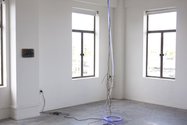
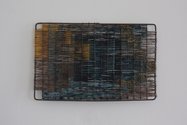
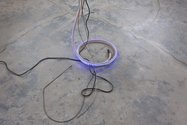
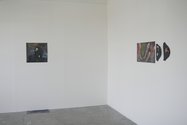



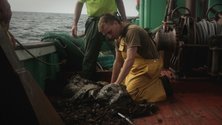
 Two Rooms presents a program of residencies and projects
Two Rooms presents a program of residencies and projects Advertising in this column
Advertising in this column


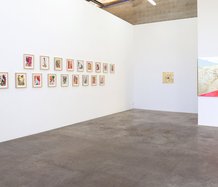
This Discussion has 0 comments.
Comment
Participate
Register to Participate.
Sign in
Sign in to an existing account.